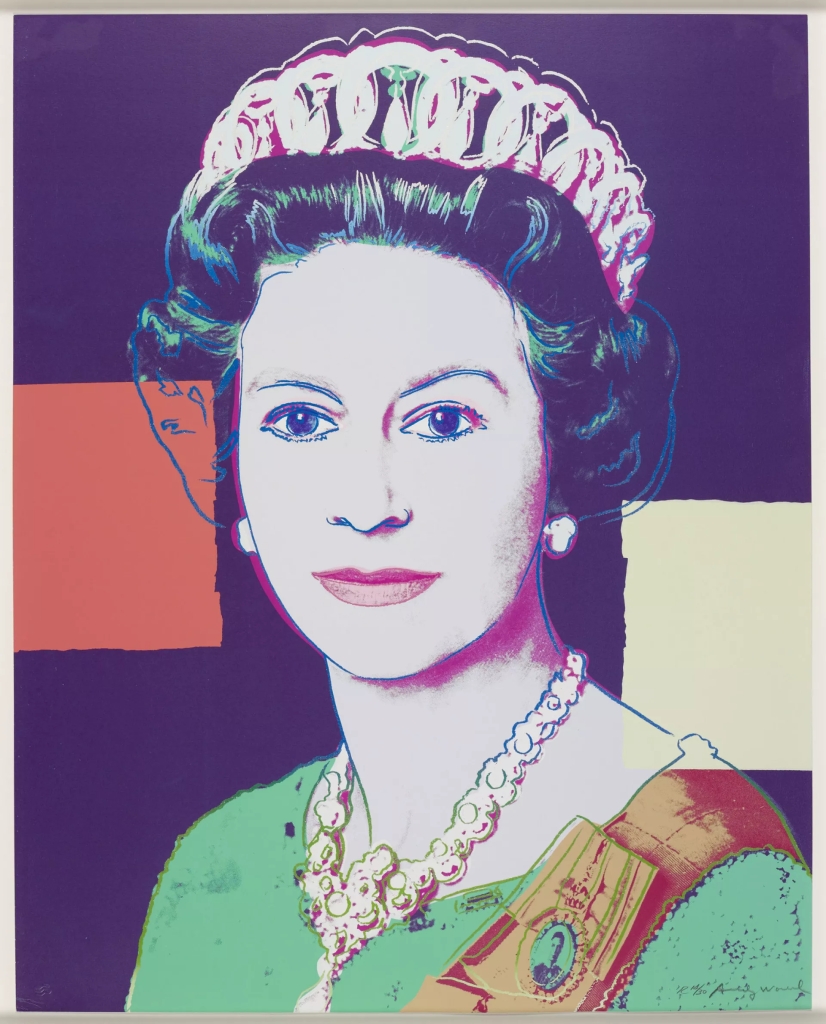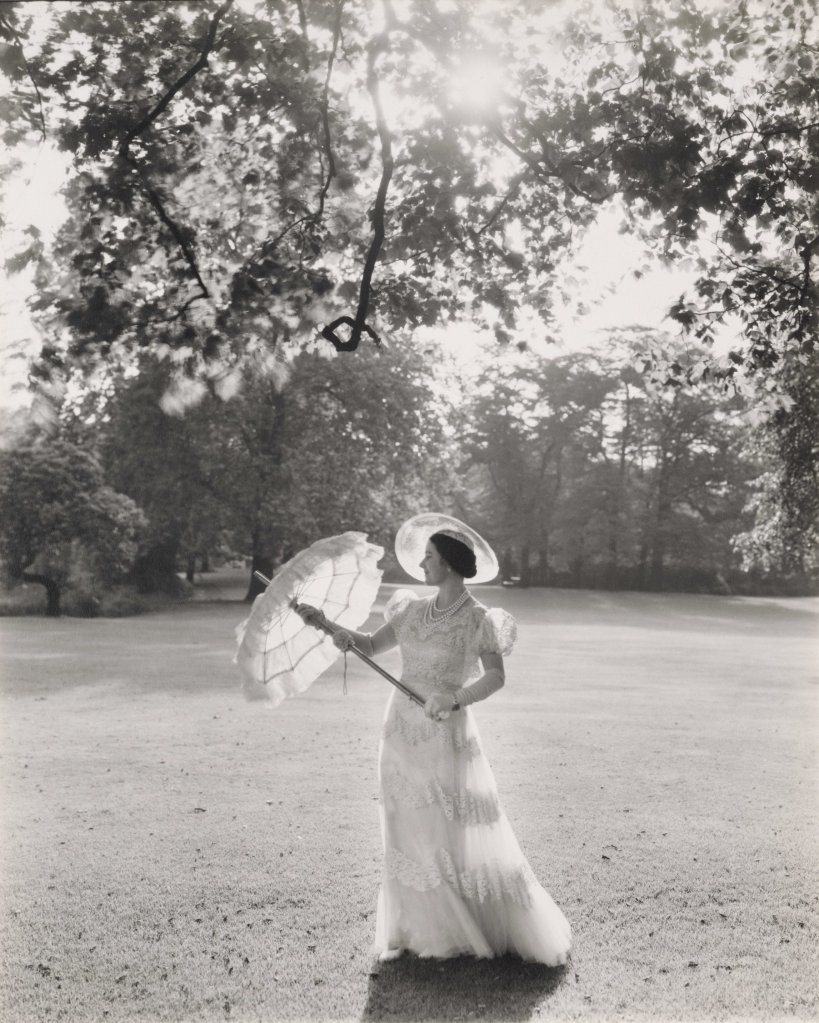Subtitled ‘A Century of Photography’, this is an absolute crowd-pleaser of an exhibition, precision-tooled to draw in the fascinated tourist alongside the domestic royal-watcher. However, whatever your views on the monarchy (which, I can assure you, it won’t change in any way), I still think it deserves your attention. This is a show equally concerned with the art form itself, and the strange mechanics of capturing the unknowable.
In a way, the royals become a lens through which we can view the development of a certain kind of photography: high-end, state-of-the-art. Because of their unique status, the royal family have been able to document themselves through the years with automatic access to the latest trends and technologies: no commission beyond their reach. But at the same time, their cipher-like presence is prevalent, sustained. You’re entering a world where the royals are the subjects, and it’s the photographers getting the exposure.
To its credit, the exhibition openly makes a feature of this. It outlines the grand tradition of retouching and enhancing pictures and invites you to trace the throughlines of these practices. The Andy Warhol version of Queen Elizabeth II’s portrait, with coloured highlights overlaid on Peter Grugeon’s famous original, hits differently in the context of early 20th century examples outlining how photographers would incorporate sketching directly into their images. There is a special display with some superbly creative examples of analogue wizardry: removing the likes of shadows and, in one rather endearing scenario, an invasive group of leaves cramping the Duke of Edinburgh’s style and, more precisely, the top of his head.

As we enter the digital age, the urge to improve on reality can border on the surreal. In particular, Annie Leibowitz’s willingness to pick the then Queen up and put her down again somewhere else, much like her namesake chess-piece, resulted in two powerfully arresting images – sometimes out of both necessity (lack of time) and invention (conjuring a more dramatic sky).
One small gallery is actually devoted to photographs of the photographers. At first glance, you might think this a somewhat ‘meta’ exercise that risks bending the exhibition back on itself, but it proves to be a particularly engaging area. Jane Bown’s near-candid self-portrait shines so much light on her warm, unfussy treatment of Queen Elizabeth II. Two portraits of Lord Snowdon taken in the same year, hang side by side. You couldn’t ask for a better demonstration of how two artistic approaches differ when presented with the same subject. One by Cecil Beaton, is business: the other, by David Bailey, pleasure. Here, he’s only just seen the photographer; there, he’s seen things you wouldn’t believe.
The sheer number of exuberantly beautiful photographs could overwhelm; but the exhibition is brilliantly curated throughout, in relatively small sections to allow pauses for reflection, the occasional breather to take it all in. A sure sense of storytelling helps here, as strong characters emerge – for example, Dorothy Wilding’s scepticism at Cecil Beaton’s keenness for natural light. Rightly, Cecil Beaton – whose relationship with the royals endured long enough for his images of them to provide a career-long overview of his developing style – is given his own room. This shot of Queen Elizabeth (the future Queen Mother) in the garden is genuinely stunning, bridging the formal style of painted portraits with the technical inspiration of the hat and parasol framing the Queen’s face as she is backlit by the sun.

The show provokes much food for thought about the partly symbiotic interaction between those either side of the camera. Do the royals want people to see them as reflecting society? These feels like a powerful notion driven by the wartime photos, where seeing the then Princess Elizabeth in service uniform would have signified a great deal; but did the image of the royal household gathered around George VI at his desk really convey an ‘ordinary’ family, dwarfed as they are by the size of the room? Perhaps the Queen Mother was more accurate when she complimented Beaton on making them seem ‘nice’, ‘real’.
But the exhibition encourages the idea that the way the royals are photographed more reflects the changing nature of celebrity, rather than ‘normal’ lives. The family are not a ‘blank canvas’ by any means, but call it discretion, remoteness, inscrutability, whatever you like – historically they’ve shapeshifted, adapted to any evolution in photographic style and technique, even embodying it, the better to enhance and validate the photographer’s approach. Perhaps Norman Parkinson’s pictures of Princess Anne to commemorate her 21st birthday are the finest example, she looking for all the world like she was about to drop her latest album of gently psychedelic folk-rock.
We see Beaton pare down his earlier flamboyance, to present Princess Alexandra and Angus Ogilvy posed as if stepping into a film noir, exuding a more accessible, Burton/Taylor-made glamour. But of course the veil seemed to part even further with Lords Snowdon and Lichfield in their pomp. It’s startling that two of the most prominent royal photographers were actually royal photographers, with their unprecedented access leading to some of the least guarded pictures of the family ever seen.

The effect of Snowdon’s photograph of the newly-married Prince and Princess Michael of Kent is seismic. And there’s no escaping the intimacy radiating through the lens in his pictures of Princess Margaret; it certainly wasn’t lost on the public either, given the outraged response to the Princess’s bare shoulders. (The strapless dress she was wearing remained out of shot, instantly turning fragile onlookers into Victorians.)
Now, goes the cliché, the internet has removed any distance between the ‘us’ and ‘them’, but it seems to me that we only think we know more than we used to. Diana, so image-aware and fashion-conscious, fully takes on the role of model in the beautiful (and sadly, final) shoot by Mario Testino, erasing any hint of backstory. (In fact, the erasure is the literal backstory, as she was ‘letting go’, wearing outfits she was about to auction for charity.) And in the family photos of Diana with her boys, photographer John Swannell removed the background entirely, favouring uniform studio white.
Even though, after 150 or more images, the family remains behind that invisible, indefinable force field, it is thanks to them that this exhibition takes us into the minds and methods of some of the finest creative artists of the last 100 years. See it if you can.
AA
‘Royal Portraits’ runs until 6 October 2024.
Practical points: No photography is allowed in the exhibition for copyright reasons, which is why I have only reproduced imagery used by the gallery specifically to promote or describe this exhibition. Presumably the same issue means that – although the gallery website currently says otherwise – there is no catalogue available. So your only chance to see the full exhibition is to visit the gallery in person.
Be aware of the 1-year pass offer. If you take your ticket as a printout (rather than an e-ticket), you can convert it to a King’s Gallery admission pass for the following 12 months. So, this would entitle you to free return visits to ‘Royal Portraits’ as well as the opportunity to see the next exhibition, ‘Drawing the Italian Renaissance’, which opens in November.
Discover more from ARTMUSELONDON
Subscribe to get the latest posts sent to your email.